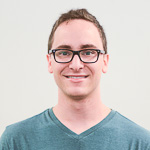Have you ever wondered what we Fuzzies do all day in the Ivory Towers of our humanities departments? Does studying English bring to mind days spent poring over the Canon (that amorphous set of Great Books decided upon by Dead White Men), waxing poetic on a whim?
Critical theory, and the humanities and social sciences more broadly, are often perceived as serious, specialized, engaging, but also arcane, elitist, unnecessarily abstract. At worst, useless.
But let me attempt to demystify “critical theory.”
In doing so, I underscore the continued importance of the humanities and social sciences, especially within Stanford’s and Silicon Valley’s tech-innovation-focused cultures.
Critical theory is a toolbox that serves as the methodological framework of the humanities and social sciences. It is a set of lenses — whether feminist, queer, racial, structural or otherwise — that allows us to examine what we do and why we do it. Critical theory engages the most fundamental questions of how our society works, and aims to shed light on (and possibly subvert) existing systems of power.
All human traditions — from weddings to funerals to college admissions — are colored by ideology, the collective set of entrenched and unexamined assumptions that weaves us together into a (mostly) cohesive society. We are all products of ideology, and indeed simply by making it to Stanford we have all successfully negotiated the power structures around us. But it would be irresponsible to ignore that the predominant ideology in contemporary American society — though changing — is Western, white and male. The perpetuation of ideological constructs like Patriarchy and Heteronormativity is incongruous with our values of liberty and justice.
Leaving ideology unquestioned is dangerous and propagates existing — and problematic — power dynamics.
Critical theory — and the humanities and social sciences more broadly — is therefore highly relevant to all of us because it fosters a community of engaged citizenship and thoughtful reflection — values at the core of Stanford’s mission in providing us with a “liberal education.”
I don’t intend to dive into the specifics or modes of “critical theory” in this piece — it is a notoriously nebulous, complex and multifarious subject, and one that I will discuss in Part II. But let me demonstrate the power of critical theory with an example:
Consider the following brief “literary” passage, which I have crafted for the purpose of example (and with minimal consideration for style):
I am tired. The early morning sun is shining through my window. I roll out of bed and into my slippers, not ready to face the day.
A simple enough passage, yes? Nothing in particular happens — just a tired character waking up in the morning, right? Perhaps literally. But let us examine this scene through a literary critical lens, and see what it can reveal.
If I were to approach this passage as a “theorist,” I would first acknowledge my assumptions: As I imagine the scene, I assume the speaker is male, though there is absolutely nothing coding for gender. I’m also aware that the speaker in my mind’s eye is white, though there is absolutely nothing coding for his race (his race! Because I’ve already subconsciously gendered him!). Why do I assume the speaker is a white male? Likely because I myself am a white male and therefore project a prefabricated identity onto a work. But when you — a woman, a person of color — read the scene, did you also imagine a white male? Maybe, maybe not, but if you did, is it because you inferred from my name that I — Mark Bessen, a white male — wrote the passage? Or for some other reason?
This type of theoretical reading of the passage underscores my own subjectivity as a reader and a human, leading to a heightened sensitivity to the systems of power operating in the world around me. Another mode of theoretical reading, commonly referred to in IHUM or PWR classes as “close reading,” lets us dig even deeper into the simple scene. We use close reading to gather information about a character (or person), as I do here: The white male self that I (the theorist) have ascribed to the passage’s “I” is likely of a comfortable class — he has a bed, a well-lit window, and even a luxury item like slippers. He may have a job — he is up at the crack of dawn against his wishes — and, to enter even greater abstraction, exists within a society in which individual personhood — his use of “I” — is a presupposition of the self, etc., etc., ad infinitum.
As I have demonstrated above, by considering even the simplest scene, whether in a work of literature or in the Real World, through a “critical” (and thereby humanist) lens, we are forced to question something about ourselves as humans. Every person on the planet has unique subjectivities — and, more profoundly, a unique self or identity. And, subconsciously or not, all of our interactions are colored by our subjectivities — our personal ideologies. These critical readings therefore demonstrate the true power of theory: to make oneself aware of the power dynamics at work in any scene, any interaction, any community.
Critical theory is a vessel, a lens through which we understand how and why we read the world the way we do. Only by exposing the mechanics of power in America can we begin to subvert and reorder those facets of our current ideology that are problematic.
This is Part I of “A case for (reform to) the humanities at Stanford.” Part II asks: Can critical theory actually do anything to enact change? And how can Stanford make critical theory and the humanities more accessible to all students? Read it on Nov. 20.
Contact Mark Bessen at mbessen ‘at’ stanford.edu.
